Rhodirphia carminata
|
|
Updated from Polillas Saturnidas de Colombia, 1997, Angela R. Amarillo-S., January 2007
|
Rhodirphia carminata
roh-DIRF-ee-uhMcar-min-AY-tuh
(Schaus, 1902)
Dirphia carminata
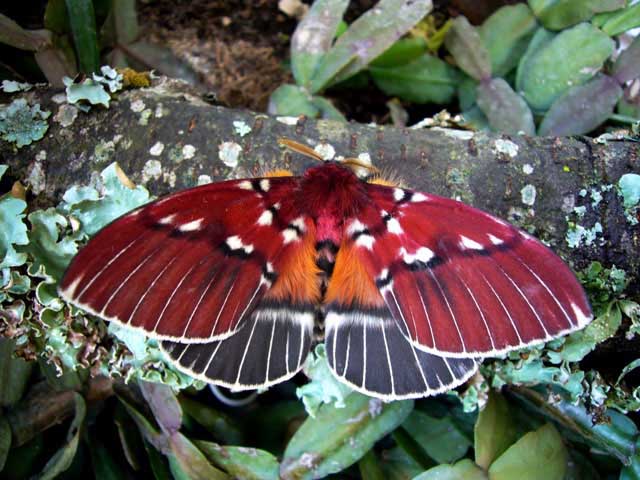
Rhodirphia carminata male, Los Bancos (Pichincha) Ecuador,
November 24, 2006, courtesy
of Horst Kach.
TAXONOMY:
Superfamily: Bombycoidea, Latreille, 1802
Family: Saturniidae, Boisduval, [1837] 1834
Subfamily: Hemileucinae, Grote & Robinson, 1866
Tribe: Hemileucinae, Grote & Robinson, 1866
Genus: Rhodirphia, Michener, 1949
|
MIDI MUSIC
"Someone to Watch
Over Me"
copyright C. Odenkirk
MIDI CITY
ON.OFF
<bgsound src="watch.mid" LOOP=FOREVER>
|
DISTRIBUTION:
Rhodirphia
carminata (wingspan: males: 87-100mm; females: forewing length: males: 45-50mm; females:
probably larger) flies in southwestern
Colombia: Valle del Cauca and Nariono
and probably Cauca; and
western Ecuador: Esmeraldas, Pichincha
and Canar and (probably Carchi (WO??)),
at elevations of 650m to 1620m.
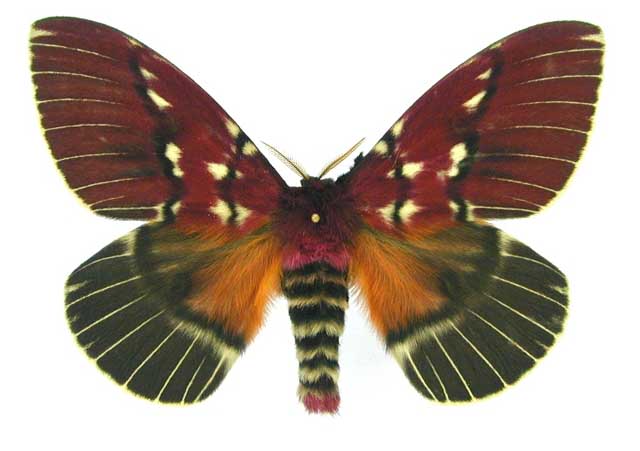
Rhodirphia carminata male, Los Bancos, westside; Pichincha Province,
November-December-January, courtesy of Horst Kach
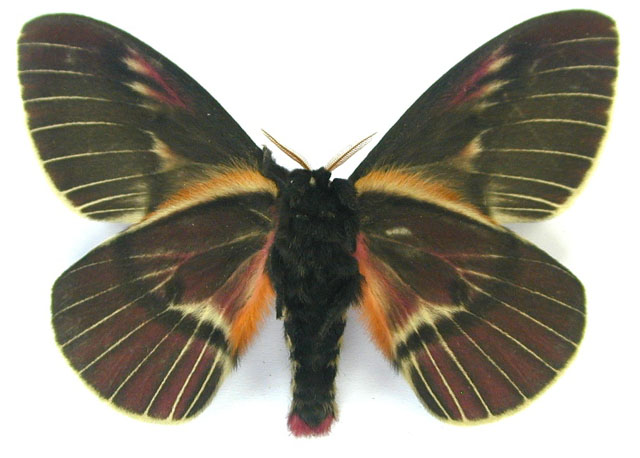
Rhodirphia carminata male (verso), Los Bancos, westside; Pichincha Province,
November-December-January, courtesy of Horst Kach
FLIGHT TIMES AND PREFERRED FOOD PLANTS:Larval hosts are
unknown.
This species probably broods continuously on a three-four month
cycle.
Colombia: March-April, August-October.
Ecuador: December-January-February, August.
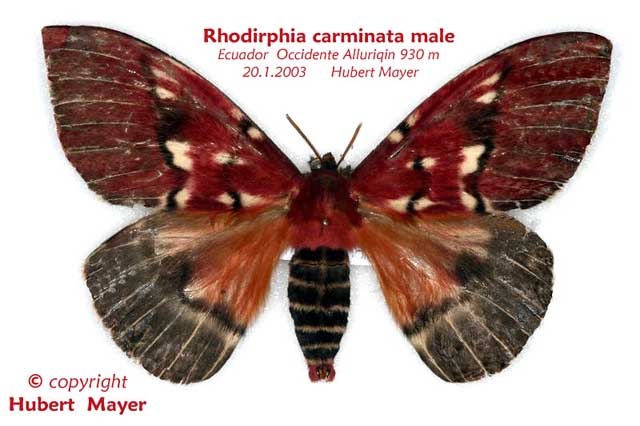
Rhodirphia carminata male, Alluriquin, Pichincha Province,
930 m, January 20, 2003, courtesy of Hubert Mayer.

Rhodirphia carminata male, 94mm, Los Bancos, Pichincha, Ecuador,
December 2005, courtesy of Bill Garthe.
ECLOSION, SCENTING AND MATING:Females extend a scent gland
from the tip of the abdomen, and the night-flying males pick up and
track the airbourne pheromone plume with their well-developed
antennae.
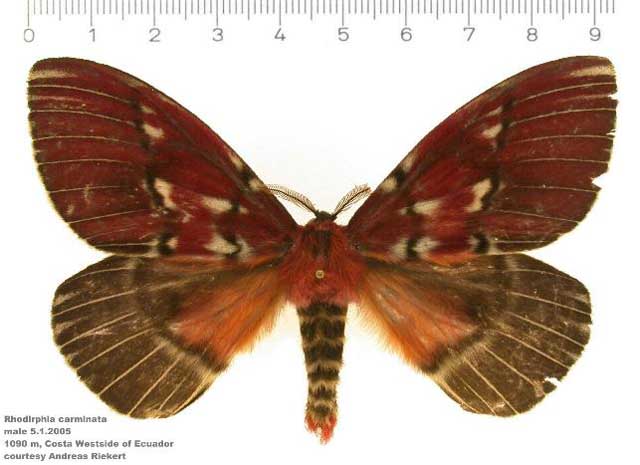
Rhodirphia carminata male, Costa, Pichincha, western Ecuador,
1090m, January 5, 2005, courtesy
of Andreas Riekert.
EGGS, LARVAE, COCOONS AND PUPAE:Eggs are probably deposited
in clusters on hostplant foliage.
Rhodirphia carminata larvae are probably highly gregarious and
probably have the urticating spines typical of larvae from the
Subfamily Hemileucinae.
Larval Food Plants
It is hoped that this alphabetical listing followed by the common
name of the foodplant will prove useful. The list is not exhaustive.
Experimenting with closely related foodplants is worthwhile.
Use your browser "Back" button to return to the previous page.
Return to Rhodirphia Genus
Return to South American Saturniidae Direcotry
Return to Main WLSS Index
The pronunciation of scientific names is
troublesome for many. The "suggestion" at the top of the page is
merely a suggestion. It is based on commonly
accepted English pronunciation of Greek names and/or some
fairly well accepted "rules" for latinized scientific names.
The suggested pronunciations, on this page and on other pages,
are primarily put forward to assist those who hear with internal
ears as they read.
There are many collectors from different countries whose
intonations and accents would be different.
Some of the early describers/namers chose genus
and species names indicating some character of the insect, but more
often, they simply chose names from Greek or Roman mythology or
history.Those species names which end in "ensis" indicate a
specimen locale, and those which end in "i", pronounced "eye", honour
a contempory friend/collector/etc.
I do not know the source of the genus
name "Rhodirphia" chosen by Michener in 1949. PERHAPS?? the hindwing
cell spot intersecting the median band suggested the Greek letter Rho.
The species name "carminata" was probably chosen
for the deep carmine ground colour of the forewing.
This page is designed and maintained by
Bill Oehlke as
part of the World's Largest Saturniidae Site.





